Human Cities Challenging the City Scale / Bilbao, November 2017
In November the city of Bilbao hosted a 4-day international event that gathered the partners of the Human Cities project. During these days the representatives of the partner cities took part in several activities organised specially for them and some other programmed within Bilbao-Bizkaia Design Week 2017.
The first activity included in Human Cities Bilbao program was the presentation of the guide “Recommendations for interventions in public areas” to the partners of HC project at Azkuna Zentroa, venue of the Bilbao-Bizkaia Design Week 2107.
Two of the members of Urbanbat, local partner of HC project, explained that the recommendations included in this document were drawn up during the citizen participation laboratory “Walking the streets!” organized by Urbanbat in the frame of the project and try to bring together all the comments and suggestions of the participants and show a kind of strategic framework for future urban interventions in our neighbourhoods.
After reading in group these key recommendations, the HC partners had the opportunity to discuss about them.
https://drive.google.com/drive/folders/12nnyn6iA0fH4STbAJwJqjibil1GIwdvu
Since 2014, the Human Cities network has been working on Challenging the City Scale to question the urban scale and investigate cocreation in cities. The Human Cities partners have carried out urban experimentations in 11 European cities empowering citizens to rethink the spaces in which they live, work and spend their leisure time.
Challenging the City Scale, journeys in People-Centred Design is the final book of the project. Through conversations with people involved, the book examines how bottom-up processes and their design, tools and instruments generate new ideas to reinvent the city. It offers inspiration and insights to everyone, from practitioners and politicians to designers and active citizens, eager to try out new ways to produce more human cities together.
Title : Challenging the City Scale, Journeys in People-Centred Design
Collective book co-edited by: Olivier Peyricot, Josyane Franc, Frank Van Hasselt
Authors: Josyane Franc, Olivier Peyricot, John Thackara, Alice Holmberg, Côme Bastin, Fleur Weinberg, Anya Sirota, Frank Van Hasselt, Robin Houterman
Graphic design: Audrey Templier, Isabelle Daëron Language: English Publisher and distributor: Birkhäuser, Basel
Co editors : Cité du design (Saint-Etienne) et Clear Village (Londres) ISBN: 978-3-0356-1796-2 Format : 21,5 x 26 cm (vertical)– 176 p Price: 39.95 € Available in partner’s bookshops and bookshop distributed by Birkhäuser Open access digital version: https://www.degruyter.com/view/product/510323?format=EBOK
The printed version was launched on 4th May 2018 in Graz, during the event organized by FH JOANNEUM included in the programme of the Festival Design Month.
You can now download it in digital , open access version following this link:
01_human_cities_challenging_the_city_scale_2014-2018_investigation
The book “Investigation” is a collaborative research work, made from all the case studies collected by the partners in Europe publicated on this website. They tell about actions led by creative citizens to transform their urban environment. Researchers from Cité du design Saint-Étienne, the Department of Design of Politecnico di Milano and Urban Planning Institute of The Republic of Slovenia Ljubljana provide a state of the art of these initiatives. Analysing these multiple examples, they investigate how urban dwellers participate, get organized and collaborate with creative professionals to prototype more liveable cities.
This scientific work published by Cité du design Saint-Étienne is addressed to researchers, practitioners, but also developers or creative citizens.
It is both an object of Design research and an incentive to develop experimental and collaborative projects of urban transformation.
Title: Human Cities / Challenging the City Scale 2014-2018 / Investigation
Main authors:
Cité du design Saint-Etienne: Isabelle Daëron, Floriane Piat & Eléa Teillier
Design Departement, University Politecnico di Milano: Davide Fassi & Laura Galluzzo
Urban Planning Institute of the Republic of Slovenia, Ljubljana: Matej Nikšič, Nina Goršič & Biba Tominc
Language: English
Copyright © Cité du design, 2018
ISBN: 978-2-912808-79-0 . Format : 215×260 mm – 240 p – not sold – free distribution within the framework of Creative Europe Programme of the European Union 2014-2018
As cities organizations are facing major urban and technological transformations, European citizens are taking possession of their cities, collaborating or acting for its renewal. Which kind of tools are set up to think and produce the public space together? How to make these bottom-up initiatives sustainable?
Challenging the City scale 2014-2018 / Investigation is a collaborative research work of Human Cities project, made from more than 80 case studies collected by the partners in Europe. They tell about actions led by creative citizens to transform their urban environment. Researchers from Cité du design Saint-Étienne, the Department of Design of Politecnico di Milano and Urban Planning Institute of The Republic of Slovenia Ljubljana provide a state of the art of these initiatives. Analysing these multiple examples, they investigate how urban dwellers participate, get organized and collaborate with creative professionals to prototype more liveable cities.
This scientific work published by Cité du design Saint-Étienne is addressed to researchers, practitioners, but also developers or creative citizens.
Title: Human Cities / Challenging the City Scale 2014-2018 / Investigation Main authors: Cité du design Saint-Etienne: Isabelle Daëron, Floriane Piat & Eléa Teillier Design Departement, University Politecnico di Milano: Davide Fassi & Laura Galluzzo Urban Planning Institute of the Republic of Slovenia, Ljubljana: Matej Nikšič, Nina Goršič & Biba Tominc
Language: English Copyright © Cité du design, 2018 ISBN: 978-2-912808-79-0 . Format : 215×260 mm – 240 p – not sold – free distribution within the framework of Creative Europe Programme of the European Union 2014-2018
The printed version was launched on 4th May 2018 in Graz, during the event organized by FH JOANNEUM included in the programme of the Festival Design Month.
You can now download it in digital , open access version following this link :
01_human_cities_challenging_the_city_scale_2014-2018_investigation
The book “Investigation” is a collaborative research work, made from more than 80 case studies collected by the partners in Europe. They tell about actions led by creative citizens to transform their urban environment. Researchers from Cité du design Saint-Étienne, the Department of Design of Politecnico di Milano and Urban Planning Institute of The Republic of Slovenia Ljubljana provide a state of the art of these initiatives. Analysing these multiple examples, they investigate how urban dwellers participate, get organized and collaborate with creative professionals to prototype more liveable cities.
This scientific work published by Cité du design Saint-Étienne is addressed to researchers, practitioners, but also developers or creative citizens.
It is both an object of Design research and an incentive to develop experimental and collaborative projects of urban transformation.
A second book – addressed to a more general audience – will be released in September 2018 and presented in Tallinn during the Desainiöö festival.
maTIKo
Story of the initiative:
– Involve citizenship in those actions aimed at improving the urban environment: interventions in the public space.
– Training in new ICTs.
– Design a methodology and contents that take into account the diverse learning possibilities a city offers for training citizenship in the transformation of their environment
Key actors
– Citizenship: districts and associations from the Uribarri neighbourhood.
– Zaramari: consulting company organising the workshop, especialized in the design and citizen participation process for fostering collective intelligence as a tool for the development of creative thinking within people and organizations.
– Bilbao City Council: arranges the workshop with the support of Zaramari and Bilbao Ekintza, a regional development organization for the dynamization of citizen participation.
Role of design
In this project it was essential the services design aimed at the development of an action that meets different purposes:
– Foster participation of neighbours and associations in the neighbourhood.
– Train participants in the use of new information and communication technologies.
– Disseminate the activity in the Auzogune area within the neighbours.
– Generate an added-value resource for the neighbours.
– Become an innovative action, with an important creativity component where participants can become the real actors both in the action and the result.
– Create an activity extendable to other neighbourhoods and districts of the city.
A collective mapping of the district was designed following these premises. For that purpose, participants were provided a prior practical training session on digital tools that would put to use in gathering information for the later elaboration and dissemination of maps.
On the other hand, four working groups were made on different subjects that carried out the required district fieldwork to complete the contents for the maps (pictures, videos, audio files and texts).
The resulting information was uploaded onto the following platforms: Ubiqarama, Storify, Twitter, Youtube and Audioboom so that the work carried out in two working sessions could be visualized.
CONTACT (of the editors)
Carolina Gutierrez – Organization Bilbao Ekintza – Email cgutierrez@bilbaoekintza.bilbao.net
Igor Arrien – Organization Bilbao Ekintza – Email iarrien@bilbaoekintza.bilbao.net
Maialen intxausti – Organization BEAZ – Email maialen.intxausti@bizkaia.eus
Manager of Economic Strategic Sectors Area at Bilbao Ekintza (Economic Development Agency of Bilbao), she is in charge of several programmes related to Creative Industries, Digital Economy and Advanced Services and works on activities linked to the European projects and International Design networks, as the UNESCO Cities of Design network. She also co-organizes the Bilbao Design Week and other events on the field of Design.
She has a MSc in Management, Marketing specialty by Sarriko University UPV-EHU and has taken part in the International Leadership Program in Visual Arts Management, New York University – NYU and Deusto University and Mircoeconomics of Competitiveness, Deusto University.
Maria Arana, is an architect who cofounded Urbanbat, an urban innovation office located in Bilbao which offers support in regional planning groups, communities and local governments. Through its work (participatory processes, workshops, interventions in public space …) it develops social innovation and urban creativity in order to promote a culture of citizen participation that contributes to the care and improvement of the environment.
URBANBAT gathers architects, urbanists, and people dedicated to social sciences, communication and education. Thanks to a multidisciplinary approach based on networking, it mediates between the parties involved in planning projects and urban regeneration.
These urban innovation office provides assistance and advice to municipalities and administrations in management of participatory processes related to urban regeneration, cultural development and social innovation.
They also mediate between civil society, private initiatives, organizations and institutions to carry out ideas that can improve the city, making it easier to bring together stakeholders in various formats: workshops, consultation sessions, conferences, films and other cultural activities.
The organization helps municipalities, governmental and non-governmental organizations, planning offices, community groups and citizens’ initiatives to share their activities, present their achievements and projects and disseminate their results.
URBANBAT develops programs of urban pedagogy in order to explore the multiple dimensions of the educating cities. One of them is Arkitente, a platform to bring the knowledge of the city and the architecture closer to children. On the other hand for the last five years, it has organized Urbanbat, the annual festival of urban and social innovation.
She has a MSc in Economics, international specialty by Sarriko University UPV-EHU. Master in Finacial Management and Advanced Course in Human Resource Management from ESIC. Eight years of working experience in BEAZ as responsible for administration and finance developing budgeting functions, accounting, purchasing and other financial and administrative managements, as well as providing advice to projects at feasibility and economic projections level. In addition, she supports and controls the actions taken by the company within the EEN. Two years as a Controller and Head of Administration at head office with subsidiaries companies throughout South America developing business plans, consolidation and economic and market analysis. Eight years as a controller in Vodafone Spain S.A. participating in international projects.
Experience of seven years in BEAZ as technical consultant and liaison in the EEN for Creative Industries Sector Group. One year of working experience in a multinational consulting company as an intern working as a system analyst. Two years of working experience in Ericsson (multinational telecommunications company) working in the R&D Department in the area of RF. Four years of working experience in business communications and digital content (“Grupo Correo”) as Head of the technical department. She is an expert in innovative and international projects.
The book arrived freshly printed in Ljubljana on 20th April and it will be launched in Graz on 4th May 2018.
After a great work of case studies collection by all the Human Cities partners, a deep process of analysis by Cité du design, Politecnico di Milano and UIRS, and a nice graphic design elaboration by Audrey Templier, the scientific publication of Human Cities-Challenging the City Scale is released.
Its title: Human Cities / Challenging the City Scale 2014-2018 / Investigation
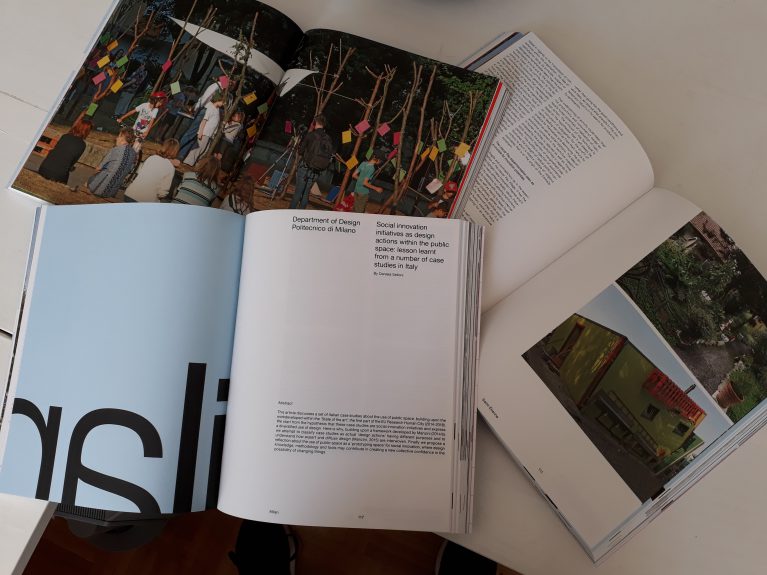
Glimpse of the book, fresh from the print shop in Ljubljana
As cities organizations are facing major urban and technological transformations, European citizens are taking possession of their cities, collaborating or acting for its renewal. Which kind of tools are set up to think and produce the public space together? How to make these bottom-up initiatives sustainable?
This Investigation is a collaborative research work, made from more than 80 case studies collected by the partners in Europe. They tell about actions led by creative citizens to transform their urban environment. Researchers from Cité du design Saint-Étienne, the Department of Design of Politecnico di Milano and Urban Planning Institute of The Republic of Slovenia Ljubljana provide a state of the art of these initiatives. Analysing these multiple examples, they investigate how urban dwellers participate, get organized and collaborate with creative professionals to prototype more liveable cities.
This scientific work published by Cité du design Saint-Étienne is addressed to researchers, practitioners, but also developers or creative citizens.
A large space is dedicated to images, to illustrate concretely this multiple initiatives, all linked by the sense of human scale and collaborative activities.
Our Investigation is both an object of Design research and an incentive to develop experimental and collaborative projects of urban transformation.
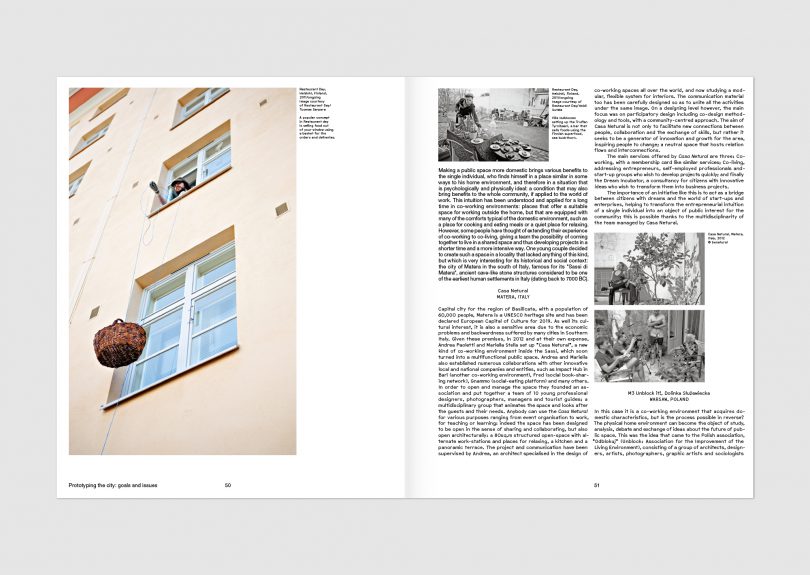
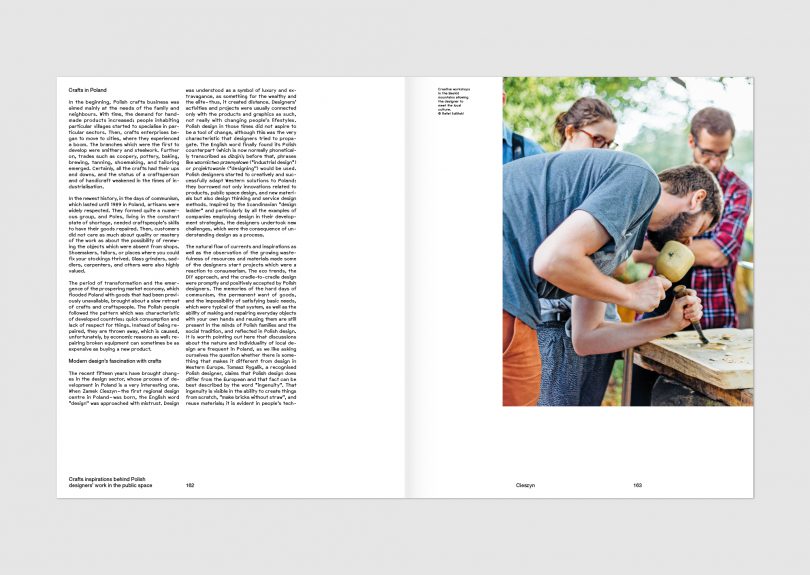
The book will be launched on 4th May in Graz for the 10 th festival Design Monat, during the event organized by FH JOANNEUM in presence of all the European partners of the programme. From this day, it will be available in digital version on the Human Cities project website – Case Studies section- and Cité du design Saint-Étienne website – publication section.
This is one of the common productions of the European project Human Cities_Challenging the City Scale . Together the partners will have produced 10 urban experiments in the various partner cities ; an exhibition-lab programmed in the main European Design festivals (next steps: Graz, Design Monat : 4thMay-24th June 2018 and Tallinn, Disainiöö: 10th– 16th September 2018) ; 11 international workshops ; masterclasses ; conferences ; and a final book narrating this experience (released in September 2018).
Intervenciones Artisticas de la Universidad del Pais Vasco – Artistic interventions of the University of the Basque Country
Under the framework of Bilbao Art District project, a collaboration with the Faculty of Fine Arts of the University of the Basque Country took place in 2014 and 2015 through a contest in which students from that faculty would put forward artistic interventions in the public space of Bilbao.
In that way, 8 artistic projects have been selected aimed at developing different artistic interventions in the public spaces provided by Bilbao Art District throughout the month of May. Selected projects will be backed up by the university which will give advice in the elaboration process and further development of the intervention. Bilbao Ekintza also supported every call with 2.000€ for the development of the interventions and also helped in communicating and disseminating the activities.
This collaboration produced two kinds of calls in the years 2014 and 2015. In one of them, apart from the University of the Basque Country and Bilbao Ekintza, the Ría de Bilbao Maritime Museum also collaborated providing exhibition space and the company Aurtenetxea Containers provided and prepared ship containers for the interventions.
The main objectives of this initiative are the following:
The interventions so far carried out have been the following:
Key-actors
The promoters of this initiative have been the Bilbao City Council and the Deanery of the Faculty of Fine Arts of the University of the Basque Country mainly, altough students have played an important role as this project would have been impossible without them.
Direct beneficiaries could also be the the Fine Arts students as one of the objectives is to bring art closer to the citizens, not just to an exlusive public, as in many cases, these interventions in public spaces require public participation.
Role of Design
Design is present along the whole process: from the initial draft of the project with the university and the city council where students are advised on how to prepare and develop the works for a public space to the design in the communication of the event.
CONTACT (of the editor)
Carolina Gutierrez – Organization Bilbao Ekintza – Email cgutierrez@bilbaoekintza.bilbao.net
Igor Arrien – Organization Bilbao Ekintza – Email iarrien@bilbaoekintza.bilbao.net
Maialen intxausti – Organization BEAZ – Email maialen.intxausti@bizkaia.eus
“Re-thinking the contemporary city through the prism of a multi-level network”.This what the UNESCO considered as exemplary for the sustainable development of cities in the case of the project Human Cities_Challenging the City Scale. On 18th October 2016, UNESCO officially launched in Quito its “Global Report, Culture: Urban Future“. A rich (300 p) document gathering case studies and recommendations to support governments in the implementation of cultural policies for sustainable urban development. It means a great acknowledgement for the Human Cities partners and a great encouragement to continue the dialogue between creators, citizens and insititutions to shape the futures of the cities.
Actually, one specificity of our project is that, amongst its 12 partners, 5 of them are from cities members of the UNESCO Creative Cities network : Bilbao, Graz, Helsinki, Ljubljana, and Saint-Etienne. It has been proposed by the leader Cité du design, from Saint-Etienne, when building the project. Involving UNESCO creative cities allows a major international impact of its actions, reaching policy makers and researchers using UN resources. On the other hand, it gives a concrete example of collaboration within this relatively new network of cities established by the UNESCO to to strengthen the development of local cultural industries as a factor of sustainable development.
The selection of Human Cities case studies for this Global Report comes just after its presentation in an exhibition and conference in Ostersund, Sweden, during the General Assembly of UNESCO Creative Network in September 2016. The Cité du design Saint-Etienne proposed the project as a part of a Good Practice exhibition. Josyane Franc, its coordinator, which is also the coordinator for Saint-Etienne UNESCO Creative City of Design presented it on 15th September 2016 to an impressive and multicultural assembly of at least 500 people coming from 116 cities from 54 countries.
Integral UNESCO report: http://unesdoc.unesco.org/images/0024/002459/245999e.pdf
UNESCO Creative Cities Network General Assembly in Ostersund: http://creativegastronomy.com/uccn2016/
The design and concept for this app – which will be available to download from April 2016– was developed by three creative minds from Graz. Miriam Derler, Andrea Hutter and Miriam Weiss, all of them master students of Communication Design at the University of Applied Sciences, designed an interactive exhibition catalogue where users stand in the spotlight. The main idea was to create a catalogue, which you can not only browse but also be part of yourself. Therefore, all visitors of exhibitions have the possibility to upload their pictures, videos and remarks, which can then be seen in the app and on video screens in public space. In addition, a scan function allows participants to retrace authors of pictures as well as to leave comments. So everybody can be part of the app and the whole Human Cities Community. Due to this fact, a good mix of many different perspectives from various people can arise since everybody has a different design approach. With this app, the three designers successfully managed to connect the digital with the real world.
So participate yourself! Download the app in April and enjoy!
Human Cities _Challenging The City Scale/ Event Bilbao 2017
Bilbao 15-18 November 2017
The travelling Human Cities exhibition in 2016-2018 presents the process and results of co-creating activities in the experimental Labs of all the Human Cities partners in ten different European cities. The next upcoming Exhibition is landing in Bilbao during the Bilbao Design Week. Every exhibition is always combined with a co-creating workshop and sharing presentations of all the Human Citizens.
Check the press release for the full program.
On 13th September 2018 , during the final event of Human Cities_Challenging the City Scale in Tallinn, happy partners launched a very important common production : the human cities 2014-2018 project book : Challenging the City Scale, journeys in People-Centred Design.

This 176 pages book is released by the famous international publisher Birkhäuser, and co-edited by Cité du design Saint-Etienne and Clear Village London, with the contributions of all the partners and invited authors. After a 1st publication oriented on research and inspirational case studies, this final book is the story of our experiences and cooperation addressed to a large audience of people interested in urban design and practices .
Since 2014, the Human Cities network has been working on Challenging the City Scale to question the urban scale and investigate cocreation in cities. The Human Cities partners have carried out urban experimentations in 11 European cities empowering citizens to rethink the spaces in which they live, work and spend their leisure time. Through conversations with people involved, the book examines how bottom-up processes and their design, tools and instruments generate new ideas to reinvent the city. It offers inspiration and insights to everyone, from practitioners and politicians to designers and active citizens, eager to try out new ways to produce more human cities together.
Our project can be seeen as a journey in people-centred design.
To prepare it, we asked Alice Holmberg, a designer and co-creation expert, to help each partner start their experiment through co-creative sessions. She explains in her article her approach to participatory design, and how she established a co-creation framework that was applied in a variety of contexts.
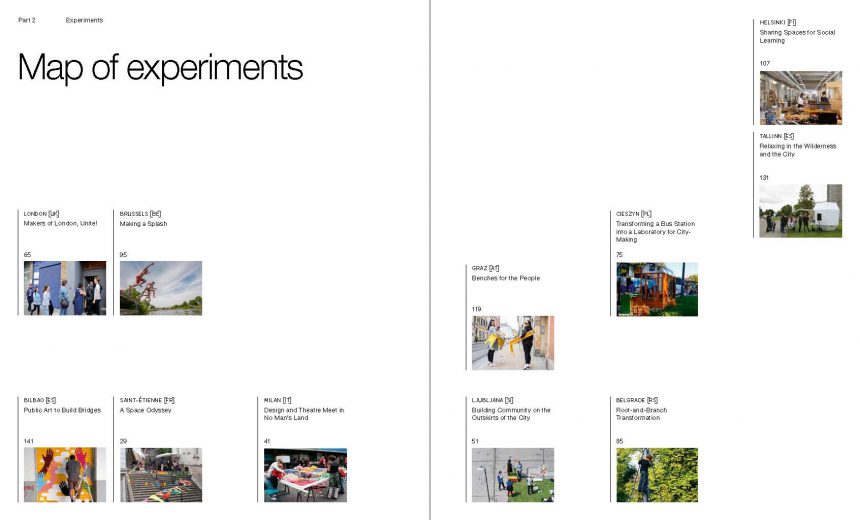
After the co-creative sessions, each partner departed on their own journey. For example, our partners in Saint-Étienne, Graz, Bilbao, Helsinki and London worked with citizens to turn vacant or
underused spaces into test sites for new solutions for work, service provision, education and communication. In Ljubljana, Belgrade, Cieszyn, Tallinn, Brussels and Milan, our partners joined forces with citizens to contribute to the development of a neighbourhood through improving the quality of public spaces. We invited two journalists, Côme Bastin and Fleur Weinberg, to capture the stories of the experiments in each of the 11 partner cities. These stories compose the main part of this book.
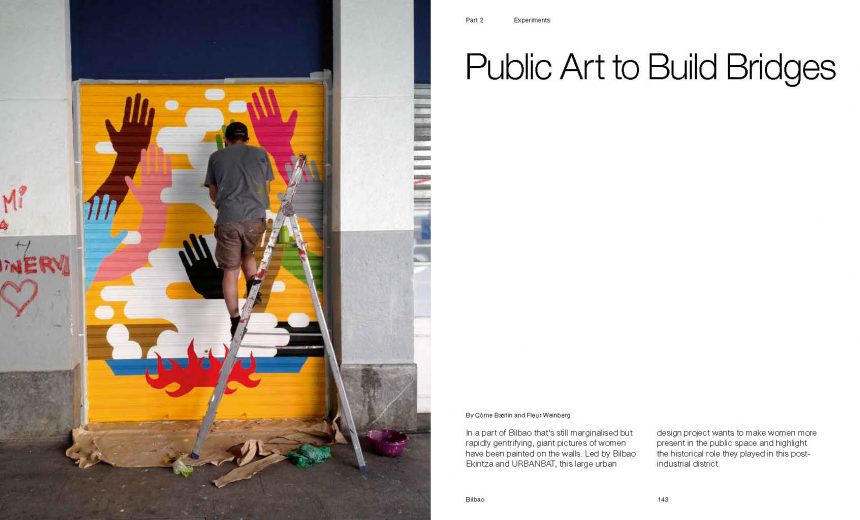
The variety of experiments allowed us to learn from each other. It also gave some hints for citizens, designers, and decision makers (insitutions and developers) which would like initiate that kind of actions. These learnings are shared in the third part of the book, written by Robin Houterman from a collective reflection led by all the partners.
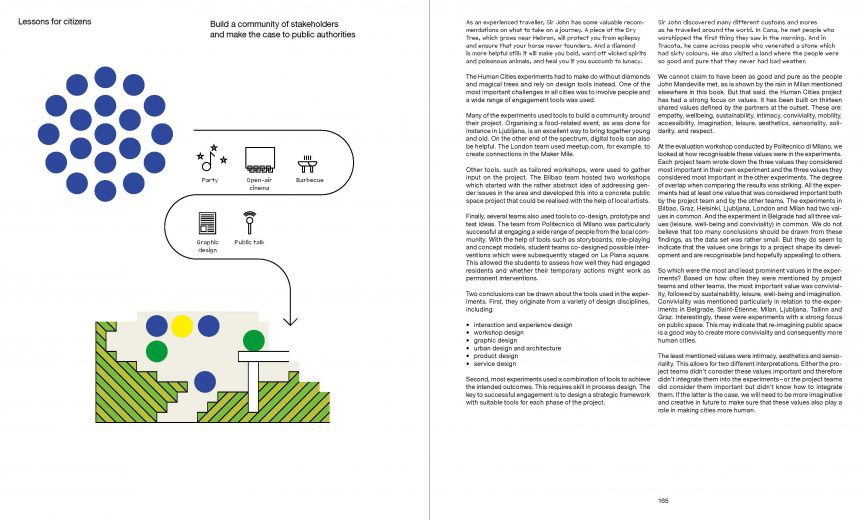
We asked two urban experts to provide a context for our stories. John Thackara, a writer-philosopher, explains the importance of understanding the notion of the city “as a living system”. His chapter emphasises the need to take care of our commons, a term that includes the spaces, memories, knowledge, skills, culture and biodiversity that we all share.
Anya Sirota, founder of and architect at Akoaki, shares with us her experiences from Detroit, USA. In a context of severe urban decline, Akoaki designs architectural interventions, art objects,
and social environments that aim to make an impact far beyond their physical appearances.
As a conclusion – or an introduction to the next journeys to come – Olivier Peyricot and Josyane Franc re-question the topic of bottom-up initiatives in the global context of city making. Could active citizen be the sole driving forces of the tranformations in contemporary cities? How to collectively take responsibility and act for the global challenges facing our urban societies ?
Since its start, the Human Cities project has led to a network of “Human Citizens” distributing their knowledge and skills across Europe, and beyond as well by making use of the network of UNESCO Creative Cities of Design. By writing this book, we hope to expand this network of Human Citizens even further. We hope that by sharing our enthusiasm and experiences, the book will be an inspiration and a valuable reference for those inclined to become involved themselves. Moreover, we want to convince policy and decision makers of the value of these initiatives and inspire them to take action to facilitate them better in the future.
BilbaoTxokoak – Bilbao Corners
http://bilbaotxokoak.raconspublics.com/
The first edition of the contest took place in 2012-2013, in that moment, and from an urban point of view, Bilbao could be seen as a city that was articulated in large infrastructures of mobility rather than in classic urban tissues. This interpretation of the city together with its collective infrastructures may overlook the fact that the identity and character of the city lays on day to day petty decisions.
Bilbao is the Great Metropolis, and so are its spots.
This initiative deals with ideas, international and interdisciplinary. It is open to anybody, groups, associations that wish to make improvements in the city.
Likewise, it involves social economic and or urban recovery and invigoration of public spaces that are derelict or under use.
This initiative means providing solutions to urban issues to improve quality of living of the citizens and their relation with their environment.
In the end, it implies a different urban concept where citizens’ participation is key, open to other disciplines in sciences and the arts.
Participants, requirements and regulations
International and interdisciplinary public tender, open to anyone, individuals or groups.
Anonymous proposals to be reviewed for the jury.
The budget is recommended not to exceed 180.000€
The project will have to be rendered in a DINA3 sheet hat will illustrate the proposal together with a narrative document and the budget in a DINA4 sheet of paper.
Projects, presentation and deadlines will have to comply with the published regulations.
The wining proposal should provide a solution to an issue or need. Evaluation criteria wil be the following:
● Artistic quality, the environment must go through a transformation that is meaningful and with a new identity.
● Particularity, it should answer requests, demands, criticism and suggestions coming from the citizens and neighbours made through the participation channels Bilbao Txokoak will make available and will publish in the webpage.
● Viability
● Capacity for invigoration, socially and economically
● Innovation
● Visibility, in as much as the proposed spaces are invigorated and made visible
● Sustainable materials and techniques
● Permanent and long lasting solutions
● Interdisciplinary, the ability to integrate diverse disciplines and to combine arts and techniques that go beyond conventional urbanism will be viewed positively.
Actions
Bilbao Txokoak has received 190 proposals for improving these 8 spaces since September 2014. The ideas coming from anonymous people, groups and associations have competed in equal conditions with those from professionals and specialized companies. The majority of participants come from the Basque Country, but projects from Madrid, Catalonia and the Valencia Community have been handed in, to mention a few, and even from outside Spain.
One of the main aspects of the contest is that of citizen participation. Thus, neighbours from Bilbao have once again had a say in key decisions for district life. El Correo newspaper has published every two weeks, from September 12th 2014, every one of the calls.
Once published, every location has been chosen via an open voting process where citizens can participate, to the extent that the vote by telephone has meant a 25% in the final count of the jury.
The Bilbao Txokoak tribunal was made up by representatives of the Area for Works and Services of the City Council of Bilbao, Bilbao Ekintza, neighbours and shopkeepers of the area under study, a representative of the Faculty of Fine Arts of the UPV/EHU and recognized personalities of the urban culture, likewise, the commissioners of the contest and a delegate of El Correo. All of them have evaluated the viability, particularity and artistic quality of the projects.
Furthermore, those designs that best met the requests, demands, criticism and suggestions from the citizens of Bilbao that have been made through the participation channels of Bilbao Txokoak have been taken into account. Throughout the popular voting process, projects together with their corresponding telephone numbers were indicated on www.bilbaotxokoak.raconspublics.com and the results were followed both in real time on the Intenet and in black and white thanks to exhibition displays installed in every centre of the districts.
Key-actors
– Arranged by Bilbao Ekintza with the support of the Area for Works and Services and the Area for Participation and Districts
– The newspaper El Correo participates as responsible for communications, calls, deadlines, follow up, awarding’s, etc
– Initiative commissioned by Racons Publics
– Companies, designers and architects participating with proposals for improvement
– Citizens: neighbours, social agents and associations of Bilbao.
Role of design
As already mentioned one of the objectives of this initiative is to open up this urban discipline to other areas of knowledge, sciences and arts and at the same time recovering significant spots through the proposals of the participants.
A variety of solutions
Design, in general is the connecting element that participates in the initiative as practice, communication, public space design, services, etc.
Accessibility has been the main handicap in the majority of projects. In order to overcome that issue, the contestants have devised, designed ramps, passes, lifts and have signalled courses to improve circulation and the merge of distant and underused places.
In other cases, different activities have been designed/organized as a way for achieving a good integration of locations. Some of the projects require more green areas and more urban furniture. In sum, the variety of solutions and its different designs, shows how rich ideas and citizens, contributions have been for places so diverse as a park, the lower parts of an avenue, a tennis court… urban facts born out of petty great decisions that provide the city with its own character.
CONTACT (of the editor)
Asier Larrinaga – Organization Bilbao Ekintza – Email alarrinaga@bilbaoekintza.bilbao.net
Igor Arrien – Organization Bilbao Ekintza – Email iarrien@bilbaoekintza.bilbao.net
Maialen intxausti – Organization BEAZ – Email maialen.intxausti@bizkaia.eus
BEAZ is the public entity of the Biscay Regional Council that works for the growth of economic activity and job creation, through the development of innovative business projects: new products, new markets, innovation, and internationalization. BEAZ is involved in the definition and development of aid programs, coming from the Department of Economic Development from the Regional Council, that support businesses and entrepreneurs, managing them through its own group of experts. In addition, they have the knowledge of the whole network of aids – both institutional and private – aimed at the enterprise and entrepreneurs, and we advise them in their search. They also offer a direct support to companies through their advisory services and relational capital, combining various instruments such as incubators, and partnerships with business actors, academics, sectoral, etc.
Bilbao Ekintza is a municipal company that aims to promote the generation of economic and social wealth for Bilbao, boosting the city’s attractiveness as a place to invest, set up companies, experience corporate growth and increase opportunities to access employment. From its Area of Strategic Economic Sectors Bilbao Ekintza works on the field of Design carrying out several initiatives such as the Bilbao-Bizkaia Design Week and the participation of the city in the UNESCO Cities of Design Network.
Bilbao Art District
Bilbao is now in an ideal position for playing a key role on the international cultural scene, as:
– Its current model is based on an in-depth rethinking of industry, architecture, cultural and contemporary society.
– It has become an international benchmark of a 21st-century city thanks to its sustainable urban development and its commitment to a knowledge and creative economy.
The Arts in their multiple portrayals have been, and are, one of the main core areas that Bilbao has opted to underpin its transformation, and this initiative will consolidate that endeavour that began 15 years ago with the opening of the Guggenheim Museum.
This is the background to Bilbao Art District, where Bilbao City Council, Bizkaia Provincial Council and the art galleries are taking part in and are working together to organise the initiative. The Guggenheim Museum, the Fine Arts Museum, the Sala Rekalde art centre, the Maritime Museum and the shops located in the Ensanche district are also involved.
In the beginning it was supported by the European Social Fund project within the operational project from 2007-2015, but not now.
Bilbao Art District will be showcased through the Arts Weekend, which will be held in the zone on the 3 and 4 May 2013. . This event will be the unveiling of a project that aims to be a regular event on the calendar.
Bilbao Art District seeks to:
– Foster the artistic identity of the Ensanche district by means of a first-rate and coherent cultural offering that helps to further endorse the cultural and artistic leaning in the city.
– It is no one-off project. Both the communication and presentation campaigns and the two-day event in May will get the project underway.
– Bilbao Art District will be progressively developed over time as has been the case in many other cities around the world.
– Position Bilbao on the art international circuit and as an important art centre on the Bordeaux-Bilbao-Madrid axis.
– Create a favourable scenario to encourage leading artists to exhibit in Bilbao and also for city and its streets to be a platform for emerging local artists.
– Attract leading lights from the world of culture, international and national collectors, critics, curators, specialist press, designers and cultural tourists.
– Involve local residents and visitors in the project, and be a driving force for local business: art galleries, antiquarian bookshops, restorers, antique shops, design, architects’ studios, music, dance and drama schools…
– Ensure that the District becomes a major player to attract new businesses that drive the existing cultural and artistic offering.
This project is possible thanks to the joint work and endeavours of the private and public initiative, and it seeks to position Bilbao on the international art circuits, drive the economy of the city and enable an artistic offering that is a value added for the visitor.
Activities until now:
• Press conferences for the presentation of the project. 11-02-2013, 26-04-2013, 4-10-2013, 29-4-2014
• Project presentation at the International Art Fair, Arco. 14-02-2013. A presentation made by Alfonso Vegara and Metropoly Foundation.
• Official opening of the District in the Atrium of the Iberdrola Tower. It was attended by about 200 people from the culture and art of the city and nationwide. 3-05-2013
• The Arts Weekend: during the first weekend of May. Local residents and visitors are invited. In 2013, 2014 and preparing the next.
– The art was in the streets
– Conferences and workshops
– Guide visits
– Special activities in the galleries to bring art closer to the people
• Open the galleries season: in October, the galleries of the district simultaneously inaugurating their exhibitions with special activities and we designed a brochure with all exhibitions, an invitation…. Also, there was music at the streets. On the first week of October
• Guide visits around the streets of Bilbao Art District and to some galleries
• A newsletter monthly: the newsletter has information with everything arts activities in this area ,and it is send each month
Key actors
Bilbao Art District is an initiative sponsored by the Bilbao City Council, the Provincial Council of Bizkaia (founders of the BIDC, and coordinators and main supporters of this initiative) and the most important museums (the Guggenheim Museum, the Museum of Fine Arts, the Rekalde Exhibition Room, the Maritime Museum and all the shops in the district of Ensanche, right at the heart of the city, galleries, art agents, etc.
This initiative is a comprehensive 2-day programme of first-rate artistic events, exhibitions and activities that will be performed for the Bilbao local residents and for visitors to the city alike. Each street of the district will be flooded with Art and Culture, turning Bilbao into a major Art centre.
The Museums will put on a special programme on those dates, the galleries will host a joint opening with longer opening times, the local shops are preparing interesting offerings and the streets will be alive with activities, music and artistic performances.
Role of design
Design is involved in the initiative from the point of view of new participatory practices, bringing art to the streets.
Design is both implicit in the management and explicit in its activities. The point is to raise awareness and attract people to Art sector, mainly from the local environment and especially young and juvenile audiences. For example using small talks, guided tours, setting routes, contests, children’s activities…
CONTACT (of the editor)
Carolina Gutierrez – Organization Bilbao Ekintza – Email cgutierrez@bilbaoekintza.bilbao.net
Igor Arrien – Organization Bilbao Ekintza – Email iarrien@bilbaoekintza.bilbao.net
Maialen intxausti – Organization BEAZ – Email maialen.intxausti@bizkaia.eus
Arte Shop
http://www.arteshopbilbao.com/2015/mobile/es/
The initiative was presented the 2011/06/29 by Lan Ekintza and the Faculty of Fine Arts of the University of the Basque Country, and as far as funding is concerned has a 50% co-financing from the European Social Fund. “Arteshop” is an innovative collaboration between young artists and dealers in Bilbao.
It aims to capture the attention of customers with the exposure of interventions created by these young artists, integrated in the life of the business, highlighting the product to be marketed in each shop. This innovative proposal provides a showcase for the work of the young creators, the possibility to experience their creativity in the daily activities of the city, and the presence of Art in different locations than the traditional spaces.
ARTESHOP BILBAO in its 5th edition is already a consolidated city project. The setting for the exhibition of the artworks is not the usual. A new challenge for the young students of the Fine Arts Faculty of the University of the Basque Country.
Once they are inspired, they have a new challenge ahead of them: the exhibition space for their work will be a shop in Bilbao. The context has never been more important. The artwork may be surrounded by very distinct elements such as exotic fruits, trend-setting clothes, motorbikes, books or classic jewellery, evoking a wide range of sensations. The students bet high and the surprise felt by whoever enjoys the artist’s creation is guaranteed.
The opportunity has been embraced. Many of the artists have never had the chance to exhibit. Others have, but with little possibility of their artworks reaching a large audience. Arteshop opens its doors to an exchange of enriching experiences for both parties: the artists and the commercial establishments. There are no prior requirements for the materials or the format of the artwork that is going to be born. A dialogue with the surroundings, however, is necessary. The young students of the Fine Arts Faculty are thrown into a demanding reality outside of the protective perimeters of their workshops and classrooms.
The result is surprising, vital and transmits energy. The art is young and fearless. The route along the shops hosting Arteshop is as attractive as enjoying an exhibition that no one has seen before and that will never be repeated. You and I have the opportunity to live this moment which must be enjoyed for its brevity, but also for its intensity of being a unique moment. This competition, which is experienced just once a year in the shops and streets of Bilbao, combines all this, making it a must in the diary of those enthusiastic about art and, therefore, life.
A prestigious jury chooses the 3 prize-winning works. And a special audience award to the most voted work. In each commerce the public can consult the phone number associated to vote for it (free call).
Is already opened the deadline to submit the requests for the 2015 edition of ARTESHOP
Call for 75 students/participants. (200€ per pupil/ 200€ for production)
Awards: First Prize: 1,200.00€, second: 900.00€, third: 600.00 €.
The selection criteria are:
• Artistic quality of the productions
• Adaptation to the characteristics of the business, as well as the product/service that is offered.
• Cost-impact of the project
• Sustainability of the project
Key-actors
• Bilbao City Council through LanEkintza (local public company) as organizer and facilitator of the initiative
• The Faculty of Fine Arts at the University of the Basque Country providing 75 students who will enjoy this experience
• The Bilbao Arte Foundation composed of professionals of the art sector involved in mentoring students in their projects, but also 10 of them will present their works.
• Innovative Trades of Bilbao (CIB) platform promoted by Lan Ekintza Bilbao with the aim to bring together traders with innovative attitude to make the trade in the city a reference for creativity and innovation.
Role of Design
It is a different way to use the design as supporting the commercial activity of the city, offering a different environment in which people enjoy something more than their shopping experience. In addition, it makes it easier for young students of the Fine Arts Faculty and artists of Bilbao Arte, the opportunity to intervene on a specific area of the city of Bilbao and display their work in an unusual context for contemporary art.
This initiative promotes collaboration between art, design, and commercial activity. Having a window in the city where to make visible the results and the work of the students of the Faculty of Fine Arts and the artists of Bilbao Arte.
This initiative allows spreading Bilbao’s image as a city that makes a bet for the art and design as economic activities that bring value to the commercial offer of the municipality.
CONTACT (of the editor)
Asier Larrinaga – Organization Bilbao Ekintza – Email alarrinaga@bilbaoekintza.bilbao.net
Igor Arrien – Organization Bilbao Ekintza – Email iarrien@bilbaoekintza.bilbao.net
Maialen intxausti – Organization BEAZ – Email maialen.intxausti@bizkaia.eus
MASTERCLASS TITLE: “Altercartography”
DATES: From 9/5/2016 to 12/5/2016. 09:00 to 14:00
LOCATION: BIZKAIA ARETOA, UNIVERSITY OF THE BASQUE COUNTRY (UPV-EHU), Bilbao. AND STREETS OF BILBAO
GIVEN BY the artist of international prestige, Rogelio López Cuenca and COORDINATED BY the commissioner and local artist, Juan Pablo Ordúñez (Mawatres).

CONTENT, DEVELOPMENT AND METHOD:
“Altercartography” was created as a masterclass in the style of a practical and experimental workshop. Starting from the analysis of different projects by the author, its aim was to understand the urban development of cities linked to different events and/or situations related to art. There was an analysis of cases such as that of Málaga with Picasso City, to projects including Mapa de Valencia, Mapa de Mexico and Mappa di Roma, amongst others.
“Altercartography” should be understood as an immersive space where there is a proposal for other forms of looking, inhabiting and developing the city map and, therefore, itinerary from the vision that citizens have of it, from a perspective that goes beyond geography. The “MAPS” projects are recurrent in López Cuenca’s work, analysing and redesigning the idea of a map, seeking another way of understanding the city and being able to inhabit it.
The general research methodology in these analysis projects focuses on understanding all information sources as possible sources. By sources we refer to archives and testimonies, of course, but also to scenes in films, personal images in family albums, novels, postcards, stories… Any source that could reveal information for different research methods, in different processes of analysis.
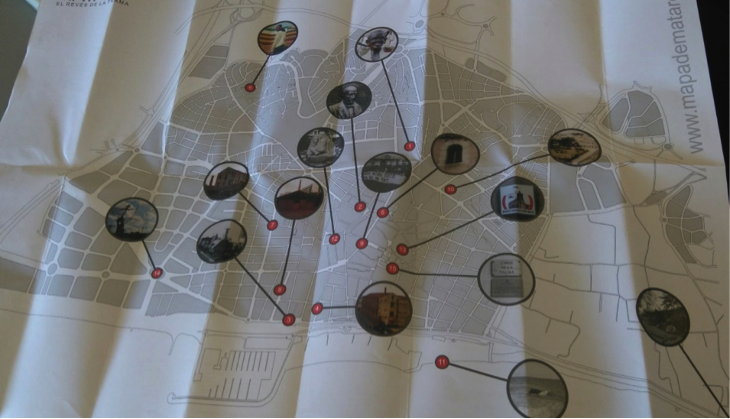
RESULTS
The masterclass given in Bilbao has produced a series of tangible results in the local artistic context. These are some examples:
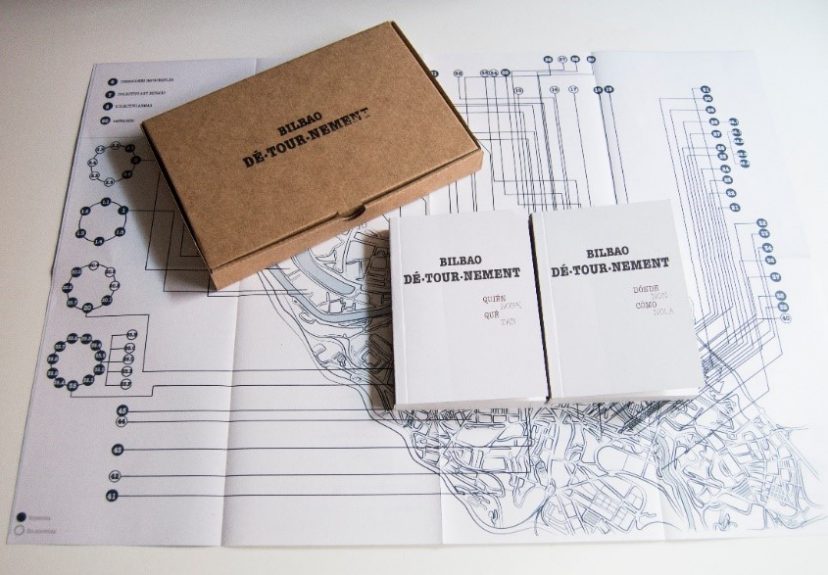

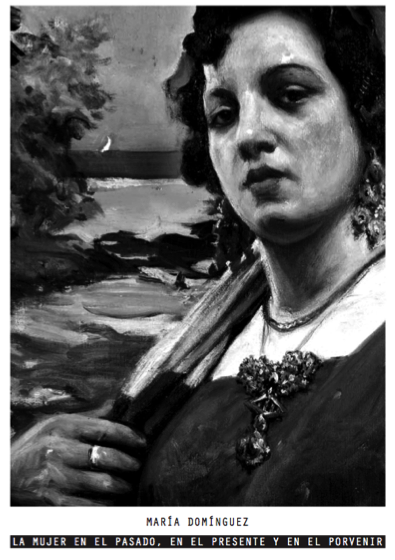
Experiment “Walking the streets!” was carried out in Bilbao La Vieja, San Francisco y Zabala neighbourhoods in the framework of the Human Cities project in Bilboa.
This participatory process for the neighbours and socio-cultural agents in Bilbao La Vieja is an opportunity to recognize each other, share experiences and work on the design of the shared strategies that contribute to improve the neighbourhood in a more sustainable and inclusive way.
By participating in several citizen laboratories, the neighbours of the area have proposed some creative solutions of intervention in the public space meeting specific desires or needs identified by them.
One of these solutions is related to the need to connect the three neighbourhoods that make up what is commonly named Bilbao La Vieja. For this, the participants proposed to create some designs for the public space that draw an itinerary to link these neighbourhoods and, at the same time, highlight the intangible heritage of the area (the collective memory, the value of its network of associations, its culture, the contribution of women to its development…).
Bilbao La Vieja is the most intercultural area of the city with many agents working for creativity and a strong associative structure that aims to solve the problems of these neighbourhoods (social exclusion, unemployment, etc.).
The initial goal is to develop, from a bottom-up perspective, a project that responds to an urban need of the area of Bilbao La Vieja by mixing disciplines and overcoming the stereotypes of the relation between urban planning and citizen participation.
The dialogue opened within the frame of this project between the neighbours, the socio-cultural agents and the City Council, has made possible to design and produce a VISUAL GUIDE with recommendations for future interventions in the public space that will serve to inspire to socio- cultural agents and policy makers.
By the end of the Human Cities project in Bilbao we are working on:
– Ten artistic interventions that highlight different aspects of the intangible heritage of the community of Bilbao La Vieja.
– One urban itinerary that will show the artworks and link the three neighborhoods of this district.
Once the project has been finished the strategy will be useful for other urban initiatives.
LIST OF THE LOCAL PARTNERS
LIST OF THE HUMAN CITIZENS (human citizens´associations that have taken part)
KEYWORDS CARATERIZING OUR PROJECT
Citizenship / Participation / Creativity / Local culture / Collaborative Culture / Heritage / Memory / Social Innovation / Public Space / Urban pedagogy